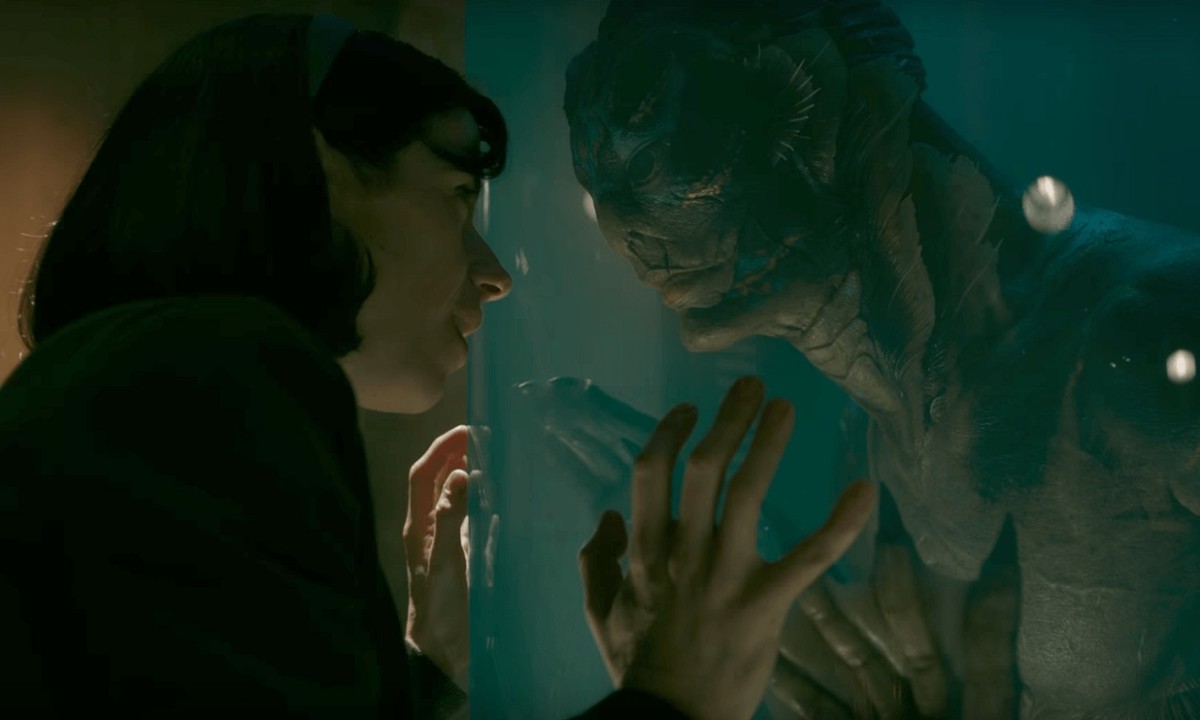Did you cry like a baby while watching “The Shape of Water”? Did you avert your eyes from Strickland’s purulent fingers? Or were you overwhelmed by cynicism and yawned the whole time?
Anyway, Del Toro’s last ordeal pays homage to the cinema of the Golden Age, a nostalgic nuance we no doubt appreciated. Is it enough to justify the four Oscars (Best Picture, Best Director, Best Original Score, Best Production Design)? The answer is given by our newsroom!
The Shape of Water– seen by Margherita Fontana
Baltimore during the Cold War. Elisa is a mute Cinderella, he is “the Creature”, an aquatic monster abducted from Amazonia and kept prisoner by some really mean government operatives. The two look at each other, understand their feelings and fall in love. She saves him. He saves her. Happy ending. If you are drunk as Guillermo del Toro was when he first told the script, telling this story doesn’t help you to seem less drunk: and I dare say that The Shape of Water is a film made for anyone who loves getting drunk with cinema, a story of love and salvation, masterfully acted and full of cinephile quotations. Yes, because the latest film by Guillermo del Toro pays tribute to many Hollywood classics, from musical comedies with Shirley Temple, to biblical dramas like The Story of Ruth. Cinema itself is the film’s main character: Elisa lives just above a movie theatre and spends her time with her neighbour Giles, gay and lonesome, watching old TV shows. According to del Toro, living in the expanded dimension of imagination allows to break boundaries to the point of mixing with the imagery itself: a passion for cinema’s fantastic world can bring you to fall in love with one of its most absurd creatures (the “monster” is the Gill-Man from Creature from the Black Lagoon, a classic of 1954). With The Shape of Water the director puts brilliantly together romance, old-style horror and sci-fi, a taste for splatter and black humour and a spy-story parody: the result is a film in equilibrium between poetry and entertainment, capable to make the public laugh and cry: a gift for everyone who shares with me the love for the cathartic power of (American and with a happy ending) cinema.
The Shape of Water – seen by Yorgos Kostianis
Hollywood’s favourite fabulist, Guillermo Del Toro, is back behind the camera on a film bearing all the hallmarks of his unique directing style. His film takes place during the Cold War era and is structured around Elisa Esposito, “the princess without a voice” who mops floors at the aeronautical research centre of Baltimore, OCCAM (perhaps an allusion to the famous razor?).
Elisa leads a lonely and quiet life; watching her days go by in a humdrum, monotonous routine, interacting solely and passively with her gay neighbour Giles, a hapless painter, failing both in work and love and her colleague Zelda, a sassy black woman feeling trapped in a stagnant marriage. However, all this is going to change after Elisa’s fateful discovery of a mysterious amphibious creature that her despotic superior, colonel Strickland, has captured and chained in the lab’s depths, which will set in motion the strings of love and hate of this grotesque fable. Visually, the film is undoubtedly a masterpiece; but that was, of course, to be expected of Del Toro’s unparalleled ability to craft dreamlike microcosms, rich in atmosphere and eeriness. Be that as it may, it also leaves audiences with a feeling of “déjà vu”.
The director admits to having been heavily influenced by the 50s cult horror gem “Creature from the Black Lagoon” and adapting it to Cocteau’s “Beauty and the Beast” with a twist. Simultaneously, Hawkings adorkably alluring and magnificently expressive portrayal of Elisa, inevitably brings to mind Amélie, whereas the cinematography is curiously reminiscent of Delicatessen –something Jeunet himself has been quite vocal about. Likewise, the amphibian humanoid isn’t only the spitting image of Abe Sapien (from Del Toro’s previous Hellboy) but is also played by the very same actor, Doug Jones; thus sparking rumours about the film possibly being the character’s origin story (vehemently denied by the director). Even Spencer’s Zelda could be mistaken for the alter ego of Minny from The Help.
Does all this detract from the film? Not in my book. While perhaps not rather deserving of its “original screenplay” nomination, it still remains a stunning romantic fairy tale on the incompleteness derived by solitude and the need for acceptance of the “other”. My real beef with the film, however, is its epidermic take on the social issues of the period and their lacklustre equation to those of the modern day. Perhaps Del Toro does, indeed, subscribe to the principle of Occam’s razor, and favours simplicity over complexity. Yet, contrary to the acute allegories of his acclaimed labyrinth scheme, the form of his greenish water seems limited to the shallowness of a teacup.
The Shape of Water – seen by Elena Saltarelli
This movie, directed by Guillermo del Toro, has plundered lots of nominations (thirteen for the Oscars), has won the Leone d’Oro in Venice, two Golden Globes and three BAFTA. As in the famous preceding (The Pan’s Labyrinth, ndr), del Toro proves to be a ballad singer extraordinarily sensitive and faceted, mostly when he brings to life a dark tale, in which markedly emotional elements and grotesque details are mixed together. This creates an extremely balanced contrast, bittersweet, supported by a musical and pressing cinematographic rhythm. The river monster, quotation from the Creature of the black lagoon (Jack Arnold’s ‘54 movie) and the water, undisputed main character of the entire film, perfectly frame the countless themes touched by this movie: the nature chained by the man’s iron hand (the film is in fact settled during the Cold War) and the idea of the Noble Savage described by the 17° Century’s Primitivism, applied to this creature that proves to be more real and pure than the civilized men that torture him. Theological references can be deduced from the consideration of the Monster as a God that, although he eats domestic animals, has a deep comprehension of human’s emotions and an artistic sensibility (for example, he loves the music that Elisa plays him on the bathtub’s border where she sees him for the first time or Giles’ painting that portray him).
Concluding, this is a movie that must be admired like a tale, like a dream’s fantasy in which love overlooks Positivist man’s reason and logic, freeing us from the chains of the barren modernism and throwing us into the water, making us discover that we can breathe there too.









Commenti recenti